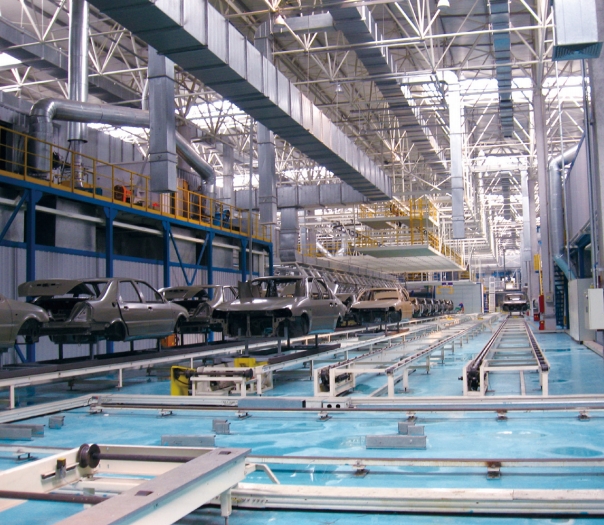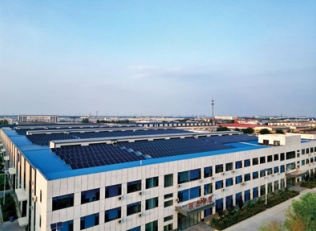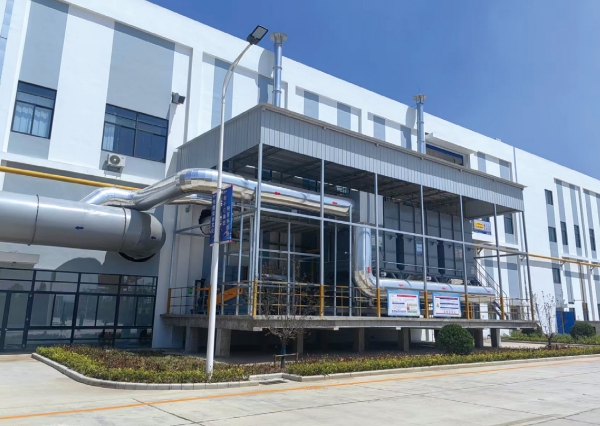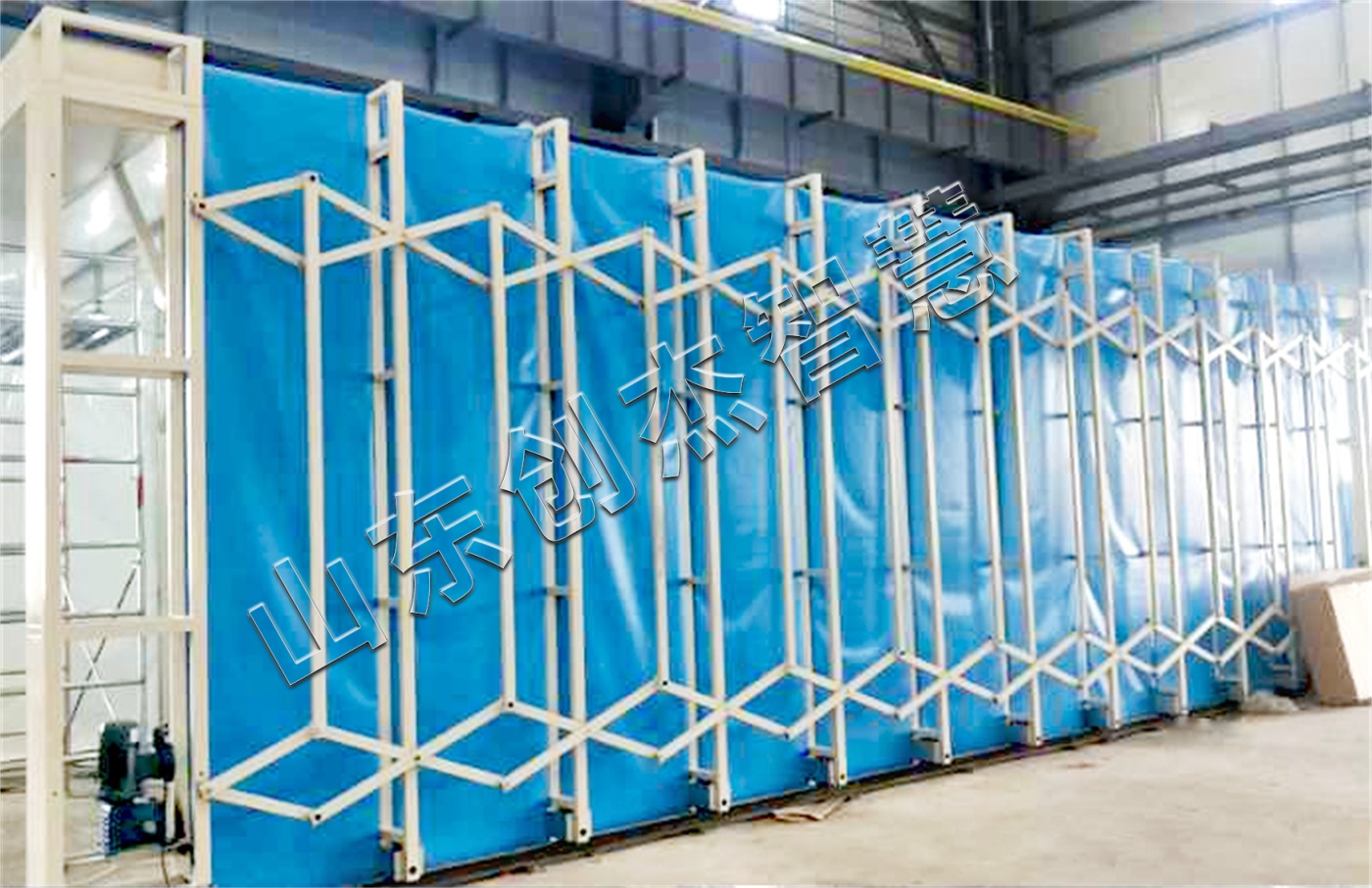VOCs廢氣處理方相關(guān)介紹
隨著社會不斷發(fā)展,工業(yè)廢氣對人們生活與學(xué)習(xí)的環(huán)境造成了影響。針對這一問題,國家已出臺相關(guān)法律條款,用以治理工業(yè)廢氣隨意排放的現(xiàn)象。通常來說,VOCs 廢氣可分為多種類型,包括可溶于水的、刺激性強(qiáng)的、惡臭明顯的等,其中主要包含硫化物、苯類、脂類、烴類等有機(jī)廢氣;這些有害氣體若直接排放,不僅會破壞大氣平衡,還會危害周邊生物的健康。因此,依據(jù)廢氣處理的特性進(jìn)行治理十分緊迫,也是亟待解決的問題,以下將對 VOCs 廢氣的環(huán)境污染及處理方法進(jìn)行介紹。
With the continuous development of society, industrial waste gas has had an impact on people's living and learning environment. In response to this issue, the country has introduced relevant legal provisions to address the phenomenon of arbitrary discharge of industrial waste gas. Generally speaking, VOCs waste gas can be divided into various types, including water-soluble, highly irritating, and odorous, mainly including organic waste gases such as sulfides, benzenes, lipids, and hydrocarbons; If these harmful gases are directly emitted, they will not only disrupt the atmospheric balance, but also harm the health of surrounding organisms. Therefore, it is urgent and urgent to carry out treatment based on the characteristics of exhaust gas treatment. The following will introduce the environmental pollution and treatment methods of VOCs exhaust gas.
VOCs 廢氣對環(huán)境的污染體現(xiàn)在多個方面:其成分主要有二甲苯、四甲苯、醋酸丁酯等,組分較為復(fù)雜,且沸點大多較高(117.6-196.8℃)。這類廢氣具有濃度高、污染嚴(yán)重的特點,在治理過程中對技術(shù)工藝的要求十分嚴(yán)格,所以選擇專業(yè)的技術(shù)方案十分必要。
The pollution of VOCs exhaust gas to the environment is reflected in multiple aspects: its components mainly include xylene, tetramethylbenzene, butyl acetate, etc. The components are relatively complex, and the boiling points are mostly high (117.6-196.8 ℃). This type of exhaust gas has the characteristics of high concentration and serious pollution, and the technical requirements for the treatment process are very strict. Therefore, it is necessary to choose a professional technical solution.
VOCs 廢氣的處理方法如下:
The treatment methods for VOCs waste gas are as follows:
1.待處理的有機(jī)廢氣進(jìn)入蓄熱室 1 的陶瓷介質(zhì)層(該陶瓷介質(zhì) “儲存” 了上一循環(huán)的熱量),陶瓷釋放熱量后溫度降低,有機(jī)廢氣吸收熱量后溫度升高,廢氣離開蓄熱室后以較高溫度進(jìn)入氧化室,此時廢氣溫度的高低取決于陶瓷體體積、廢氣流速和陶瓷體的幾何結(jié)構(gòu)。
1. The organic waste gas to be treated enters the ceramic medium layer of the heat storage chamber 1 (which "stores" the heat from the previous cycle). After the ceramic releases heat, the temperature decreases, while the organic waste gas absorbs heat and the temperature increases. After leaving the heat storage chamber, the waste gas enters the oxidation chamber at a higher temperature. At this time, the temperature of the waste gas depends on the volume of the ceramic body, the flow rate of the waste gas, and the geometric structure of the ceramic body.

2.在氧化室中,有機(jī)廢氣通過燃燒器加熱升溫至設(shè)定的氧化溫度 760℃,使其中的 VOC 成分分解為二氧化碳和水。由于廢氣已在蓄熱室內(nèi)預(yù)熱,燃料的消耗量大幅減少。氧化室有兩個作用:一是確保廢氣能達(dá)到設(shè)定的氧化溫度,二是保證有足夠的停留時間讓廢氣中的 VOC 充分氧化。廢氣在氧化室中焚燒成為凈化后的高溫氣體,隨后離開氧化室進(jìn)入蓄熱室 2(在前面的循環(huán)中已被冷卻),放熱降溫后排出,而蓄熱室 2 吸收大量熱量后升溫(用于下一個循環(huán)加熱廢氣)。凈化后的廢氣經(jīng)煙囪排入大氣,同時引入小股凈化氣清掃蓄熱室 3。排氣溫度比進(jìn)氣溫度高 40℃左右。
In the oxidation chamber, the organic waste gas is heated by a burner to a set oxidation temperature of 760 ℃, which decomposes the VOC components into carbon dioxide and water. Due to the preheating of exhaust gas in the heat storage chamber, the consumption of fuel is significantly reduced. The oxidation chamber has two functions: one is to ensure that the exhaust gas can reach the set oxidation temperature, and the other is to ensure sufficient residence time for the VOCs in the exhaust gas to be fully oxidized. The exhaust gas is incinerated in the oxidation chamber to become purified high-temperature gas, and then leaves the oxidation chamber and enters the heat storage chamber 2 (which has been cooled in the previous cycle). After releasing heat and cooling down, it is discharged, while the heat storage chamber 2 absorbs a large amount of heat and heats up (used to heat the exhaust gas in the next cycle). The purified exhaust gas is discharged into the atmosphere through the chimney, and a small stream of purified gas is introduced to clean the heat storage chamber 3. The exhaust temperature is about 40 ℃ higher than the intake temperature.
3.循環(huán)完成后,進(jìn)氣與出氣閥門切換一次,進(jìn)入下一個循環(huán),廢氣從蓄熱室 2 進(jìn)入,從蓄熱室 3 排出。同時引回部分凈化氣清掃蓄熱室 1。如此反復(fù),實現(xiàn)連續(xù)工作。
After the cycle is completed, switch the intake and exhaust valves once to enter the next cycle. The exhaust gas enters from the heat storage chamber 2 and is discharged from the heat storage chamber 3. Simultaneously introduce some purified gas to clean the heat storage chamber 1. Repeat this process repeatedly to achieve continuous work.
VOCs 廢氣通過廢氣收集裝置,由高壓風(fēng)機(jī)送入 RTO 系統(tǒng)中加熱,溫度升高后進(jìn)行高溫氧化分解,形成無毒、無味的高溫?zé)煔狻T撛O(shè)備利用蜂窩狀陶瓷蓄熱體回收并儲存燃燒后的高溫?zé)煔鉄崮埽厥盏臒崃砍^ 95%,可用于廢氣預(yù)熱,從而達(dá)到環(huán)保節(jié)能的目的。
VOCs waste gas is collected by a waste gas collection device and sent to the RTO system for heating by a high-pressure fan. After the temperature rises, it undergoes high-temperature oxidation and decomposition, forming non-toxic and odorless high-temperature flue gas. This device utilizes honeycomb ceramic heat storage to recover and store the high-temperature flue gas heat energy after combustion, with a recovered heat of over 95%, which can be used for exhaust gas preheating, thus achieving the goal of environmental protection and energy conservation.
本文由VOCs廢氣處理友情奉獻(xiàn).更多有關(guān)的知識請點擊:http://www.qzxcdz.com我們將會對您提出的疑問進(jìn)行詳細(xì)的解答,歡迎您登錄網(wǎng)站留言.
This article is dedicated to the automatic shot blasting machine and friendship For more information, please click: http://www.qzxcdz.com We will provide detailed answers to your questions. You are welcome to log in to our website and leave a message
上一篇:機(jī)器人涂裝線:機(jī)器人的應(yīng)用
下一篇:安裝焊煙除塵設(shè)備:這些事項要注意
















 魯公網(wǎng)安備 37142502000144號
魯公網(wǎng)安備 37142502000144號